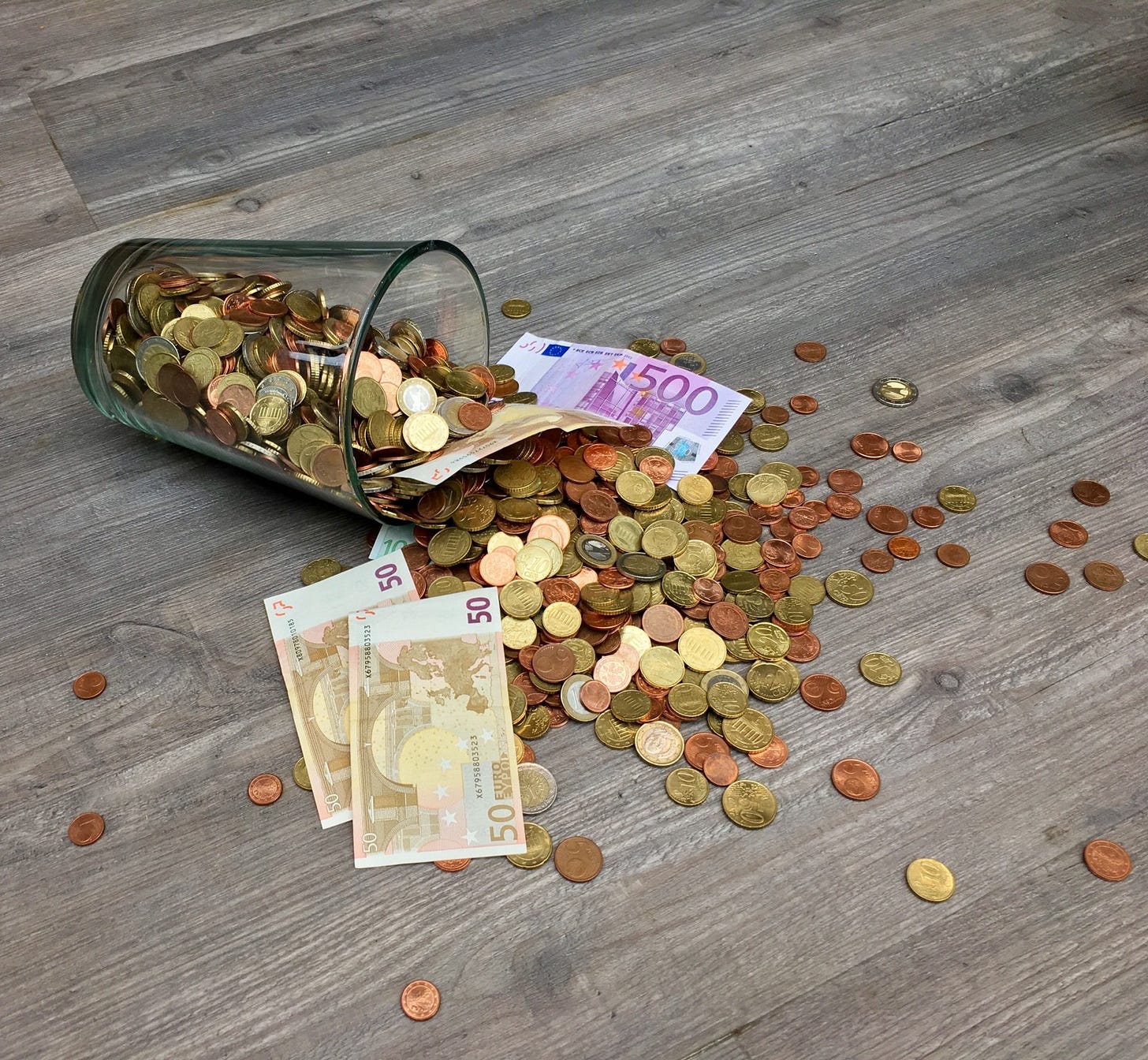What I Learned as an European Software VC
“It was the best of times, it was the worst of times, it was the age of wisdom, it was the age of foolishness...” — A Tale of Two Cities, Charles Dickens

Venture veterans will tell you it takes as much time and money to train an astronaut as a venture investor, and the odds of success are probably comparable. Luck plays an important role.
Six years ago to this month, after working at institutional financial service firms for 5 years (JP Morgan New York and Ares Capital Los Angeles), I decided to leave a comfortable life in the US, follow my intuition, and take a 90% pay cut to move to London and be part of the emerging European technology ecosystem.
Over the last 7 years, I have invested in B2B software businesses across all stages (venture, growth, buyout) in the US and in Europe (in London at Columbia Lake Partners and Dawn). The experiences have provided an unique opportunity to evaluate 800+ companies and work with 14 European B2B software scale ups (of which 3 have exited).
While indeed the feedback cycle in venture is much slower than inside a startup (7–10 years vs. 1–3), I have observed some recurring patterns:
European software scale ups need more cross-border collaboration and hands-on support with US expansion
Dark Horses, Stallions, and Zebras that create real value receive less attention
Growth capital should be raised when the business has sufficient operating leverage & distribution is measurable and predictable
Market urgency is more important than market size
Not every venture fund provides venture returns, and not every high growth technology startup is suited for venture
I will describe these observations with a bit more detail.
1. European software scale ups need more cross-border collaboration and hands-on support with US expansion

Silicon Valley is still revered as the (birth)place of innovation and disruption — in spite of the high cost of talent and socioeconomic disparity — due to the intense collaboration and communication that persists in the region. The speed at which key learnings, especially mistakes, are shared in an openly coopetitive and radically candid manner between entrepreneurs, investors, advisers, and the broader ecosystem is incredibly helpful for advancing baseline expertise.
Similar topics come up frequently when speaking with founders here — irrespective of whether the startup is based in Denmark, Sweden, Norway, Finland, Estonia, Netherlands, Belgium or the UK.
Time and again it is related to Product Marketing, Sales, Finance and US expansion.
Prior to penetrating the US market, the majority of the 14 Series A/B European software businesses I’ve worked with target customers with an average Annual Contract Value (“ACV”) of $20K to $60K. The reasons I believe this is a ‘sweet spot’ for European B2B software companies scaling to be global industry leaders is because of:
The distribution of companies by size in Europe and their propensity to spend on outsourced software. There are a lot of mid-sized enterprises (defined as 250 to 2000 FTEs) as Eurostat and this article will show
Access to inside sales talent in certain European cities (with strong universities and corporate graduate programs) and US cities (with similar dynamics) to enable high sustainable growth
Access to budget for US corporate and mid-sized enterprises that have an urgency to buy outsourced software (i.e. more greenfield with simple decision-making and deployment rather than complex multi-stakeholder, ‘rip and replace’ opportunities)
Why (re)create a playbook that has proven to be (un)successful by a scale up in a neighbouring country targeting the same buyer with the same go-to market strategy?
This is an area where investors and Board members who are seasoned operators and industry strategists can add immense value. While Europe has demonstrated clear success in building technology and product, a talent shortage in other functional areas still exists.
To shorten the feedback loop and increase likelihood of success for venture-backed startups, we need to openly & broadly share and learn quickly (from mistakes and successes).
2. Dark Horses, Stallions, and Zebras that create real value receive less attention

Due to the power law distribution, the scale ups that receive the most attention are the fastest growing 1–3 companies in each venture fund (a.k.a. the ‘Unicorns’ or ‘Rockstars’). Investors want to deploy as much capital into these businesses as possible — the best funds tend to have bigger, big winners (not more big winners).
This behaviour creates a domino effect when it comes to media attention given to scale ups that raise large funding rounds. Growth at all costs is often not sustainable and should not be celebrated.
In a cyclical asset class like venture, (over)funding into startups that hint at the ability to blitzscale into the 0.14% Unicorn Club tends to happen in low interest rate (low growth) macroeconomic environments, like today. The (over)emphasis on building a ‘rocket ship’ often leads to unrealistic pressures on startups and an under-appreciation for businesses that create real value.
There are, in fact, many great companies with high sustainable growth that still provide far better returns than comparable types of investments (a.k.a. ‘asset class’), such as private equity or real estate.¹ These businesses often receive little support or attention. For example, Hotjar (Malta) and Toggl (Estonia) were able to successfully scale to $15–25MM Annual Recurring Revenue (“ARR”) without external funding through continuous cycles of measuring, testing, and iterating to enhance product-market fit. Atlassian (Australia) and Mailchimp (US) spent many years refining their go-to market strategy resulting in profitable, long tail growth to become big software businesses. There are many ways to finance growth, which is unique to the market, company and vision of its founders.
3. Growth capital should be raised when the business has sufficient operating leverage & distribution is measurable and predictable

The beauty of modern day B2B software businesses (often SaaS) is:
They have high operating leverage (due to relatively low cost of production thanks to cloud). In other words, it is ‘easier’ to achieve economies of scale due to high gross margins — you can sell more software with incrementally less people over time. (See #6 of this article which looks at Microsoft and Google as examples.)
Companies have negative working capital —they receive more money from customers (sometimes, a lot if multi-year contracts) before paying salaries to talent — so the cash flow profile is more attractive compared to say, a business that holds inventory and has a complex supply chain (e.g. hardware, retail).
For these two key reasons, investors generally value software businesses much higher given the ability to profitably grow faster when compared to other types of business models.
For most mid/enterprise software businesses, sufficient operating leverage is achieved around 100 to 250 FTEs (or $10–30MM ARR mark). This is a function of the cost of building a product and the payback on marketing and sales, plus related overhead. The headcount number varies depending on whether the business is deer or elephant hunting² and how working capital is managed. In the best cases, a company will be self-sufficient at this scale without the need for external funding.
When there is a well-defined market opportunity, new capital is raised to accelerate growth (instead of profitable, slower growth) by investing more in talented salespeople and paid marketing based on proven metrics and ability to forecast return on these distribution channels. This strategy allows the business to take advantage of its high operating leverage.
A ‘back of the envelope’ calculation is to look at how the ARR per employee and growth in ARR relative to increase in operating expenses (e.g. salaries, rent, travel) trends each quarter. A healthy benchmark for mid/enterprise software businesses at scale is $100–150K ARR per employee and an upward trend over time.
4. Market urgency is more important than market size

It is challenging (and capital intensive) to grow quickly if the target market and its customers do not have a burning desire (or strong pain) to invest in a new solution built by a young company.
Selecting the right market and focus in the value chain enables exponential (venture) growth to achieve scale. For example, the technology for Robotic Process Automation (“RPA”) has existed for 20 years. However, the market has only taken off in the recent 5 years — with UIPath (Romania) growing to over $300MM ARR over a few years, in spite of many other players in the market including Microsoft which announced its entry last year.
Once scale is achieved³, a business has more options available for growth (aside from relying on financial investors) — for instance, acquiring companies in an adjacent market to expand its market size or be part of an established industry player (i.e. strategic exit).
As a result, venture firms spend a lot of time mapping and understanding the market (e.g. Bessemer Roadmaps like the one on Remote Work and Vertical Software) to determine what is obtainable, serviceable, and addressable (i.e. SOM, SAM, TAM). It is the best way to ‘de-risk’ an intelligent bet on a startup prior to investing.
5. Not every venture fund provides venture returns, and not every high growth technology startup is suited for venture

Regardless of whether a firm is European or American, venture funds are subject to the same power law distribution effect as aspiring startups.
Data from Limited Partners (“LPs”, or investors of private funds) indicate that only 4% of startups in Europe provide venture returns (5x+ on invested capital) with these businesses accounting for on average 44% (median is 25%) of fund returns (see page 17 of EIF Report). In the US, the figures are 10% (5–10x+ on invested capital) and 60%, respectively.¹
The delta in these figures are explained by history and geographic construct:
Venture in Europe started as small cap, high risk private equity in the late 1990s; whereas, the semiconductor engineers in Silicon Valley became entrepreneurial investors in the 1960s. Gaining and sharing experiences (especially mistakes) takes time.
Business policies, conduct, and communication continue to be unique to and siloed within each European country. This is changing though.
(Very pleased to see the Not Optional initiative which launched a year ago to standardize employee stock options across Europe taking a big step forward in recent weeks.)
Why does this matter?
In today’s market, there is no shortage of financial capital (read this article as well as this one). New funding sources like experienced Angels, governments, corporates, banks, pension funds, and sovereign funds are investing directly into startups at very founder friendly terms, in addition to being LPs in venture funds.
Compared to five years ago, the amount of capital supplied relative to startups has flipped.
It is therefore crucial to think about (venture) capital by evaluating its relevance based on expertise, network, and expectations. More importantly, startups need to be financially designed for high sustainable growth in order to continue building global industry leaders and to propel our vibrant ecosystem forward in this new decade.
Notes:
(1) Ca. 15–25% of a venture fund is invested in companies that provide 2–5x return to shareholders. See reports with data in note (4).
(2) This terminology is more applicable to US scale ups. Most European software scale ups I’ve worked with have had success with ‘animals’ bigger than deers ($10K ACV) yet smaller than elephants ($100K ACV). I believe there is a bigger pool of global talent for businesses targeting a customer base of $20K to $60K ACV and the product offering for these companies are more likely to scale up and down market, hence greater long term value creation (e.g. Medallia vs. Qualtrics).
(3) Scale is defined as achieving $30MM+ ARR, growing 40%+ annually and profitable (or some mix of the ‘Rule of 40’). In Europe, economies of scale for a software business can be achieved at $10–20MM ARR.
(4) Data from Horsley Bridge, a Limited Partner (“LP”) that invests in top performing venture funds, on US venture can be found here and here. European Investment Fund (also known as “EIF”), an anchor LP for many European venture funds, published their findings in 2017 and 2018.

